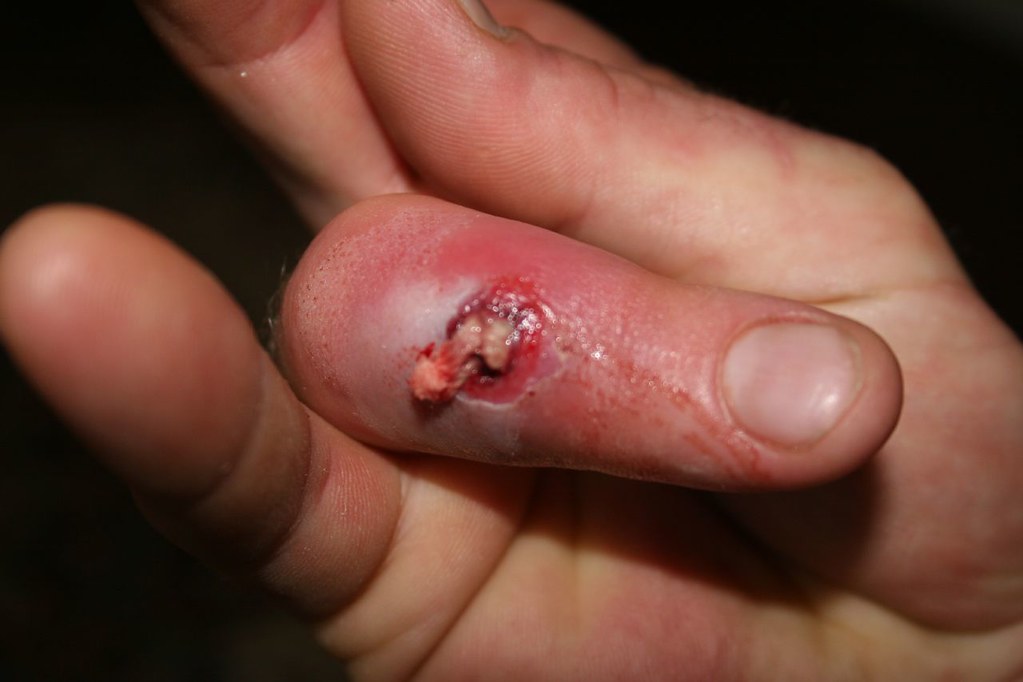Wound infections, particularly in diabetic foot ulcers and other foot ulcers, can lead to complications when not addressed promptly. Understanding how to identify an infected wound and what steps to take is key to effective wound care and recovery. Let’s explore the signs of infection and what to do when a wound is infected.
Recognizing Signs of Infection
Redness around the wound is one of the earliest indicators of infection. The skin surrounding the wound may appear inflamed and become visibly redder as the infection progresses. This discoloration often extends beyond the edges of the wound and can signify the body’s response to bacterial invasion. Swelling is another common symptom of an infected wound. The affected area may feel warm and appear swollen due to an accumulation of fluid as part of the body’s inflammatory response. This swelling can lead to discomfort and reduced mobility, particularly in the case of foot ulcers.
Pain localized to the wound area is a significant warning sign. While some discomfort may be expected with a wound, increasing pain or a change in pain intensity can indicate the presence of infection. Pain that worsens over time should prompt immediate medical attention. Unusual or excessive drainage from the wound, particularly when it is pus-like or foul-smelling, is a clear sign of infection. The drainage may vary in color from yellow to green, signaling that the body is attempting to fight off the infection. When the infection has spread beyond the wound site, fever or systemic symptoms, such as chills or fatigue, can occur. These signs indicate a potential escalation of the condition, requiring urgent medical evaluation to prevent further complications.
Steps To Address an Infection
Early recognition and prompt intervention are key in wound care and addressing infections. Here are the steps to take when a wound is infected:
- Seek Medical Assistance
Promptly consulting a healthcare professional is key when signs of infection are present, as early intervention can prevent the condition from worsening. A physician may thoroughly examine the affected area, order laboratory tests, or perform imaging studies to determine the extent and nature of the infection. Based on their findings, they may prescribe antibiotics, drain abscesses, or recommend other necessary treatments tailored to the specific type of infection. Delaying medical care can result in serious complications, including the spread of the infection to other parts of the body.
- Receive Professional Treatment
Treatment plans typically include a combination of the following methods to manage the infection and promote healing:
- Administration of antibiotics to reduce the infection.
- Cleansing solutions designed to sanitize and protect the wound.
- Application of specific wound dressings, tailored to the wound type.
- Debridement, or the removal of dead or infected tissue, to encourage recovery.
- Surgical intervention when needed, such as draining pus or reopening the wound.
Professional interventions are fundamental to managing wound infections safely and effectively.
- Follow-Up Care
Follow-up care is key in wound care, healing properly, and preventing recurrent infections. Patients should attend scheduled medical appointments to monitor healing and address complications early. Adherence to prescribed treatments is key to eliminating the infection. Maintaining proper hygiene, regularly changing dressings, and observing for signs of reinfection are primary components of effective aftercare.
Schedule Your Wound Care Today
Effective wound care is fundamental to preventing long-term complications from diabetic foot ulcers or other foot ulcers. Recognizing and addressing infection signs promptly aids better healing outcomes and mitigates the risk of further issues. If you suspect an infection, contact a podiatrist or trusted professional to schedule your professional wound care evaluation today.
- Preparing for Thyroid Surgery and Understanding the Recovery Process
- Understanding the Connection Between Depression and Chronic Illness
- The Role of Preventive Care in Federal Dental Coverage
- Natural Supplements for Hemorrhoid Relief
- How an Optometrist Can Help with Presbyopia and Age-Related Vision Changes


Leave a Reply